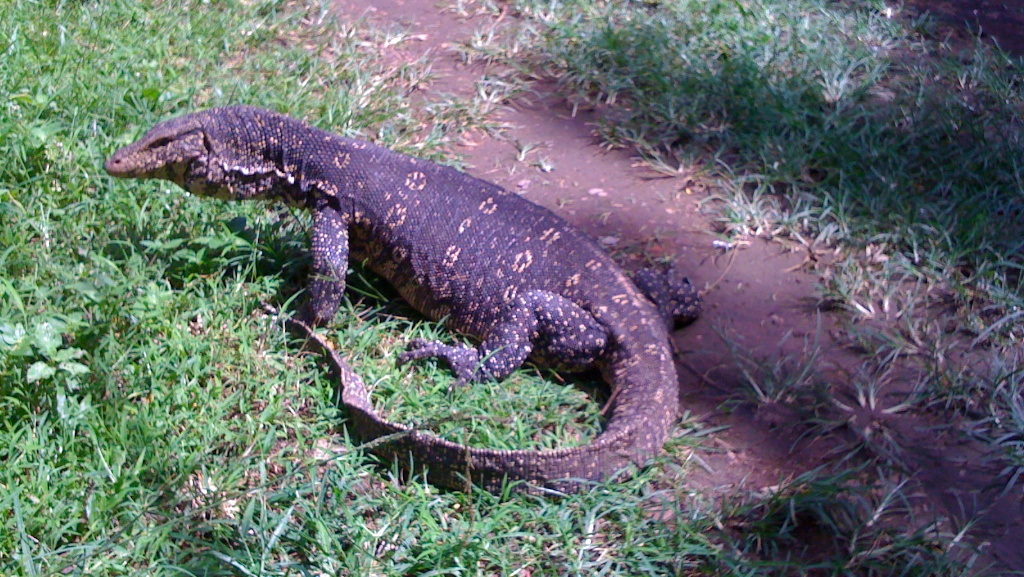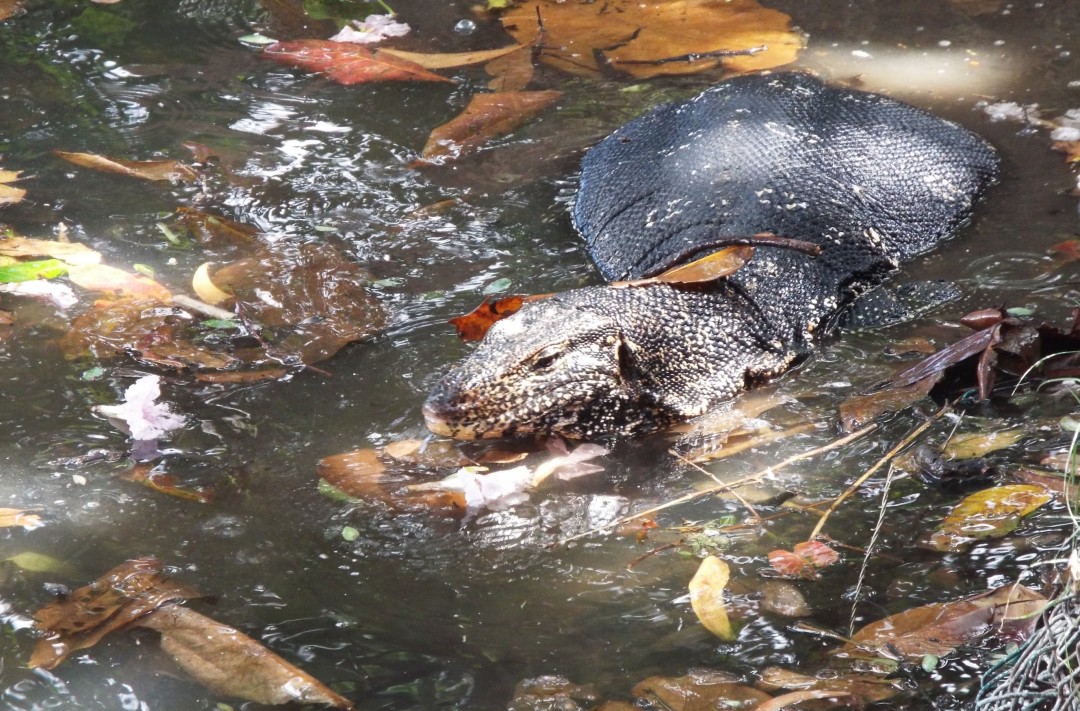Kabaragoya is the Singhalese name for water monitor (Varanus salvator) – a large lizard native to Southeastern Asia. They are commonly found in Sri Lanka, the Malay archipelago and various islands of Indonesia, living in areas close to wet lands such as mangroves, tanks, paddy fields, canals and also streams in forests of all climatic zones from coasts to mid hills.
In August 2013 during one of my weekend trips to Sri Lanka, I decided to stay at La Villa Sanctuary, a two room boutique hotel in Thalawathugoda, a suburb of Colombo about 16 kilometers from central Colombo. The villa was very quiet and relaxing, it had a small outdoor pool, the rooms were tastefully decorated. It also had a resident duck and a pond full of fish and turtles.
Something that fascinated me was the number of Kabaragoyas that roamed around the water canal next to the villa in the wee morning hours. There could have easily been 15 or more of them, and Raja the chief manservant of the villa fed them while I had my breakfast nearby and unprepared to capture any photos. He threw chunks of meat at the Kabaragoyas, and they would leap and it was teeth everywhere, in a matter of seconds the reptiles would become calm and wait for another round from Raja. I have seen and heard of feeding many other types of animals, but this was one unique and amazing experience and it made me want to go to the villa again.

This Kabaragoya could be about 1.5 meters in length and was spotted around the water canal next to La Villa Sanctuary
These reptiles are cold-blooded and can outlive where other large carnivores cannot. Kabaragoyas are often sighted in many inner urban areas in Colombo, it could take you by surprise while taking a routine walk or stroll. These lumbering lizards have contributed momentary, almost childhood excitement to many of my tuk-tuk rides around a city I grew up and consider my second home. I have heard Sri Lankans talk about the supposed benefits of eating Kabaragoya meat, but I am not sure if this is a common practice, and I definitely don’t want to eat barbequed Kabaragoya and even doubt if other, rational people would try eating it. These reptiles are generally considered harmless by locals who live in their proximity and are rarely regarded as a disturbance. It’s not hard to understand the relatively fair degree of co-existence between them and us – but then again, it is also increasingly evident that these gentle, fascinating beasts have been taken for granted, something we are universally famous for.







No Comments